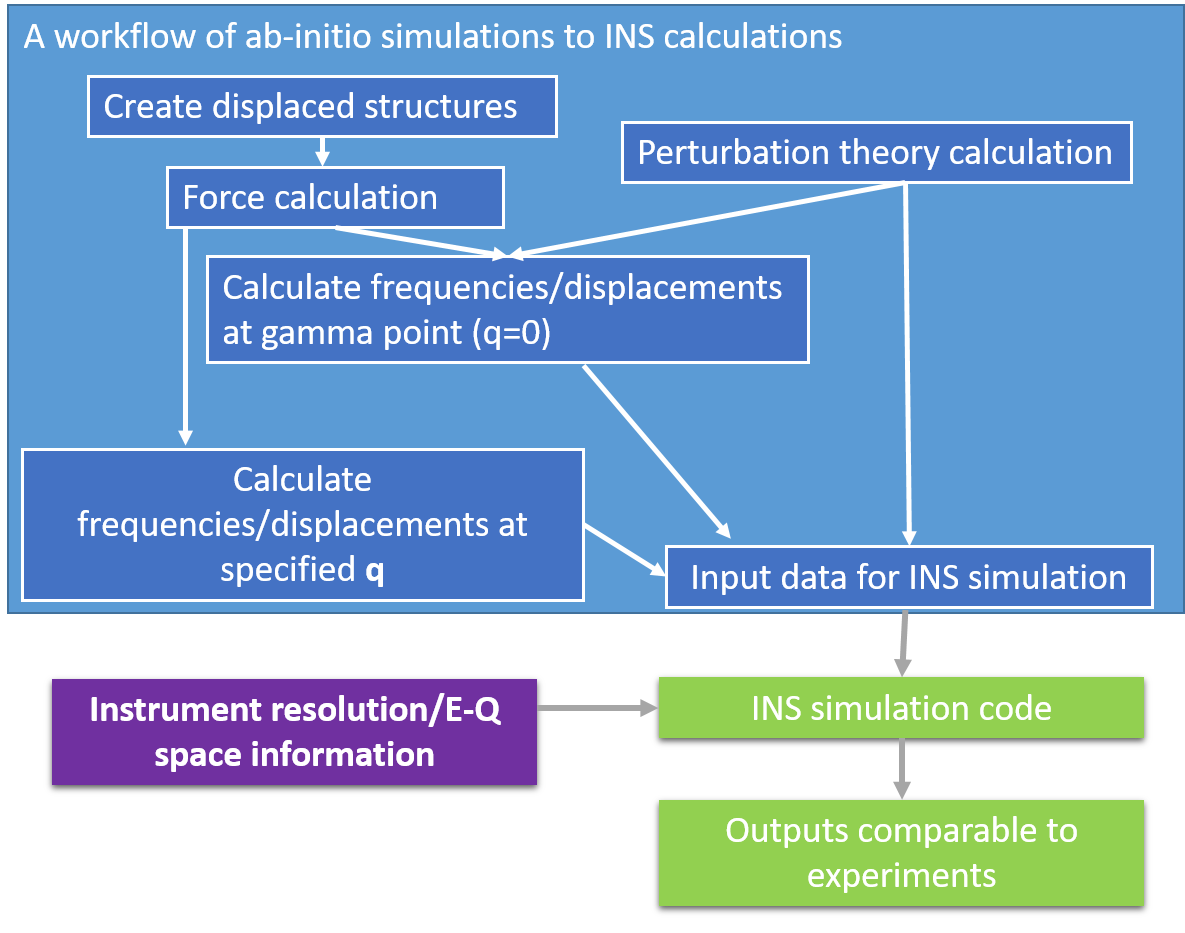Inelastic neutron scattering (INS) spectroscopy provides a richer microscopic insight into a material due to the absence of structural symmetry related selection rules generally observed in other vibrational spectroscopies, such as in infrared and Raman spectroscopies. INS depends on both energy (E) and momentum (Q) transfer of neutrons due to interaction of lattice phonon providing further microscopic details of interatomic interactions. First-principles density functional theory (DFT) based simulations can be used to calculate vibrational frequencies and phonon dispersion relations. However, results of such calculations are not directly comaparable with experimental INS spectra. There is a need to include the neutron scattering cross sections, overtones and combination modes, together with instrument resolutions and specific E-Q windows. AbINS algorithm is a tool, which resides in the open-source Mantid framework bringing simulation to the same environment as experimental reduction and analysis, includes efficient calculation of multi-phonon spectra and supports a variety of instruments and simulations software including Phonopy. This graphical users interface (GUI) based application uses the normal modes from DFT calculations and it is straightforward to interpret experimental INS with simulations.

Two tools are available to interpret vibrational spectroscopy and phonon dispersions available from indirect geometry and direct geometry neutron instruments, called abINS and abINS2D, respectively. Following features are available in these tools:
ABINS for vibrational spectroscopy:
- calculate structure factor S(Q,w) from DFT lattice dynamics data
- interface with a number of DFT lattice dynamics packages: CASTEP, CRYSTAL, DMOL3, GAUSSIAN, VASP, PHONOPY
- temperature corrections available through the Debye-Waller factor and Bose populations analysis.
- control over overtones (1 to 10)
- atom projected INS spectrum for in-depth analysis
- convolution with number of instrument parameters, such as TOSCA, LAGRANGE,
More information about abINS will be found here
ABINS-2D for phonon dispersion:
- calculate structure factor S(Q,w) from DFT lattice dynamics data
- interface with a number of DFT lattice dynamics packages: CASTEP, CRYSTAL, DMOL3, GAUSSIAN, VASP, PHONOPY
- temperature corrections available through the Debye-Waller factor and Bose populations analysis.
- control over overtones (1 to 10)
- atom projected INS spectrum for in-depth analysis
- convolution with number of instrument parameters, such as MAPS, MARI, MERLIN, PANTHER,
- instrument parameters are applied through incident energies and chopper settings
- geometry limits and resolutions are applied automatically
![]()
More information about abINS-2D will be found here
Download Mantid to use these tools.
Publications:
If you use abINS, please cite:
K Dymkowski, SF Parker, F Fernandez-Alonso and S Mukhopadhyay, "AbINS: The modern software for INS interpretation",
Phys. B 551, 443 (2018). doi:10.1016/j.physb.2018.02.034
To know more about the project and discuss your requirements from the software contact Sanghamitra Mukhopadhyay (sanghamitra.mukhopadhyay@stfc.ac.uk).
